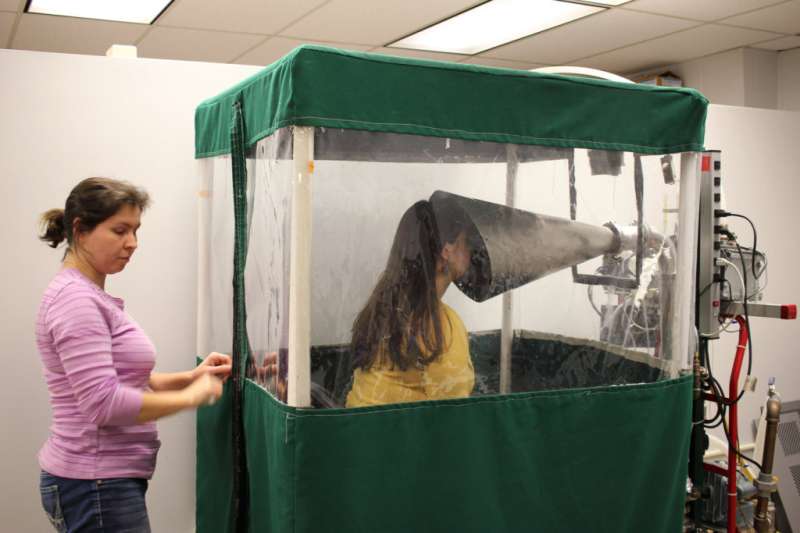The 'Gesundheit Machine' collects campus cooties in race against a fierce flu

It's turning out to be a particularly harsh flu season. The epidemic hasn't hit the University of Maryland College Park yet; students just recently returned from winter break. But in the close quarters of dorm rooms and cafeterias and study groups, the flu will come. And when it does, Dr. Don Milton, a professor of environmental health, will be ready and waiting to learn from it.
On a blustery January day, Milton was with undergraduate research assistants Louie Gold and Amara Fox trying to get students to sign up for his new study on how the flu—and other viruses—spread. They had vouchers for the school convenience store, free hot chocolate and handmade signs.
Milton was hoping dozens of students would enroll. And if they should get sick, they would be sent to the clinic at the School of Public Health, just across the street from the dorms.
That very day, a sick student did come by, but she didn't make the cut.
"She had some of the right symptoms: cough, little bit of runny nose, but didn't have much of a fever," said Dr. Barbara Albert, who screened her for the study. In other words, they're looking for the people whom everyone else wants to stay away from.
If a student is sick enough, they get sent around the corner, to a room with a crazy-looking, Rube Goldberg-like contraption known as the "Gesundheit Machine."
For half an hour, the student sits in the machine. As they breathe, the machine collects whatever virus they've got from the droplets in the breath they exhale.
The researchers will then use the students' contacts to try to figure out how infections spread from person to person.
"Roommates, study buddies, girlfriends and boyfriends," Milton said. "We're going to swab them every day for a week to see if they get infected."
If they do get infected, researchers will try to pin down if they got the bug from the original subject, or someone else.
"We're going to deep-sequence the genetic code of the agent to see if it was really exactly the same thing," Milton explained. He's aware confirming that your roommate gave you a horrible flu could ruin some perfectly nice roommate relationships, but it's for science.
The fact is, he said, we don't know that much about the mechanics of how bugs spread. He's trying to understand it from every possible angle.
"We're measuring the environment in the rooms, contact, biomarkers from blood, what they're shedding into the air," he said.
All the data is not just for our information, but so we can design spaces to keep infections from spreading too easily, and protect ourselves more effectively.
That's how he and his research staff can be around sick people all the time without getting infected themselves. They all got flu shots, of course, but Milton went further.
"Downstairs where the patients come in, we have upper-room UV to sanitize the air in those rooms," he said. During his last flu study, it worked. "Not a single person on my research team got the flu that year. Even though we saw 156 people, some of whom were shedding up to 10 million copies per half-hour of the virus, none of my people got sick."
He hopes environmental measures like these could be used to fight bugs that are even worse than the flu.
"What about pandemics and what about new infections that come along? How can we defend against those?" Milton asked. "It is possible, even if it's airborne, to protect against it. We just need to understand how it works better."
The information they get from this study could, for example, lead to better ventilation systems that would make it harder for the flu and even more dangerous viruses to spread.
©2018 Kaiser Health News
Distributed by Tribune Content Agency, LLC.


















